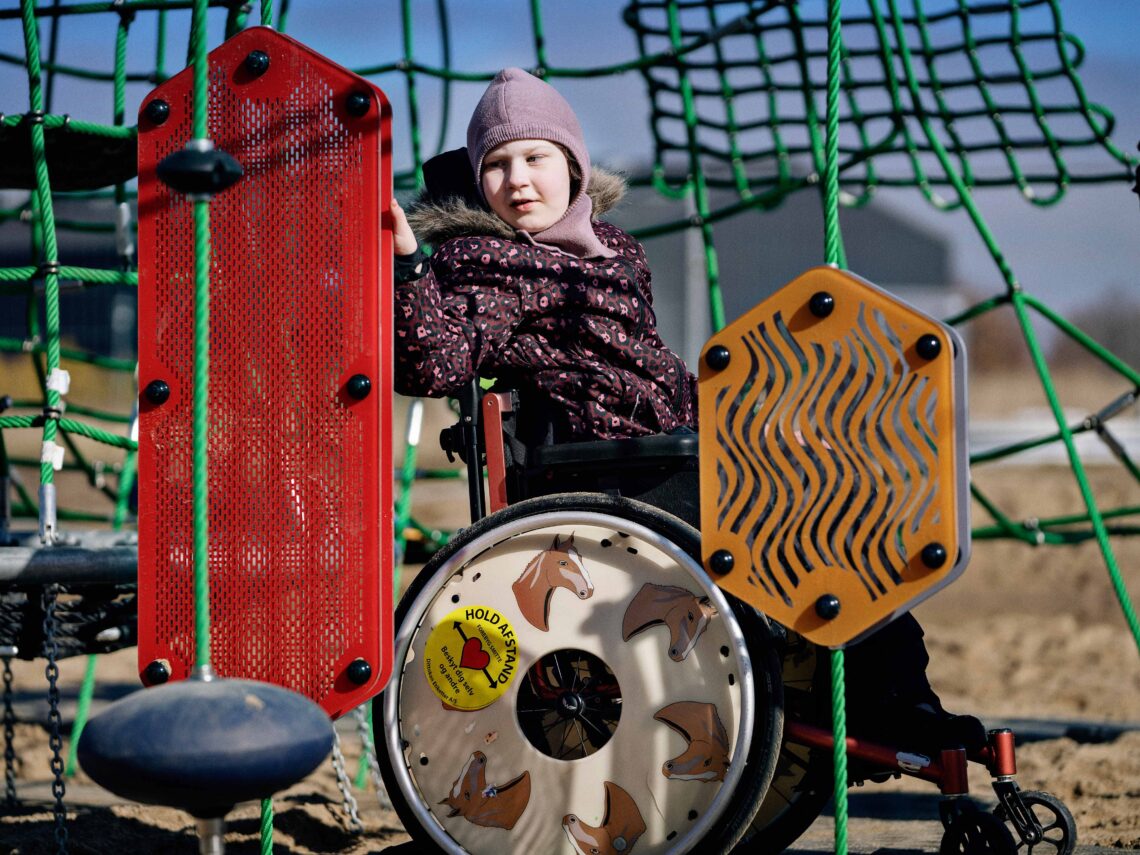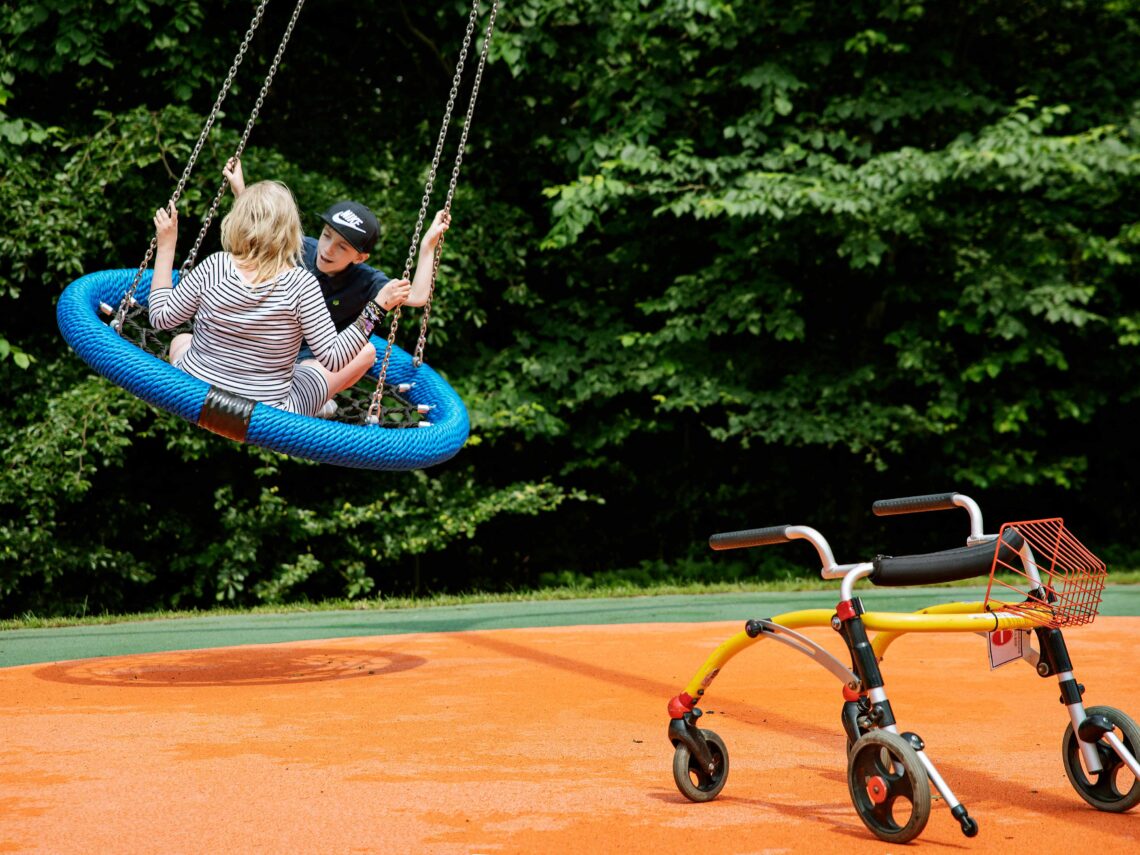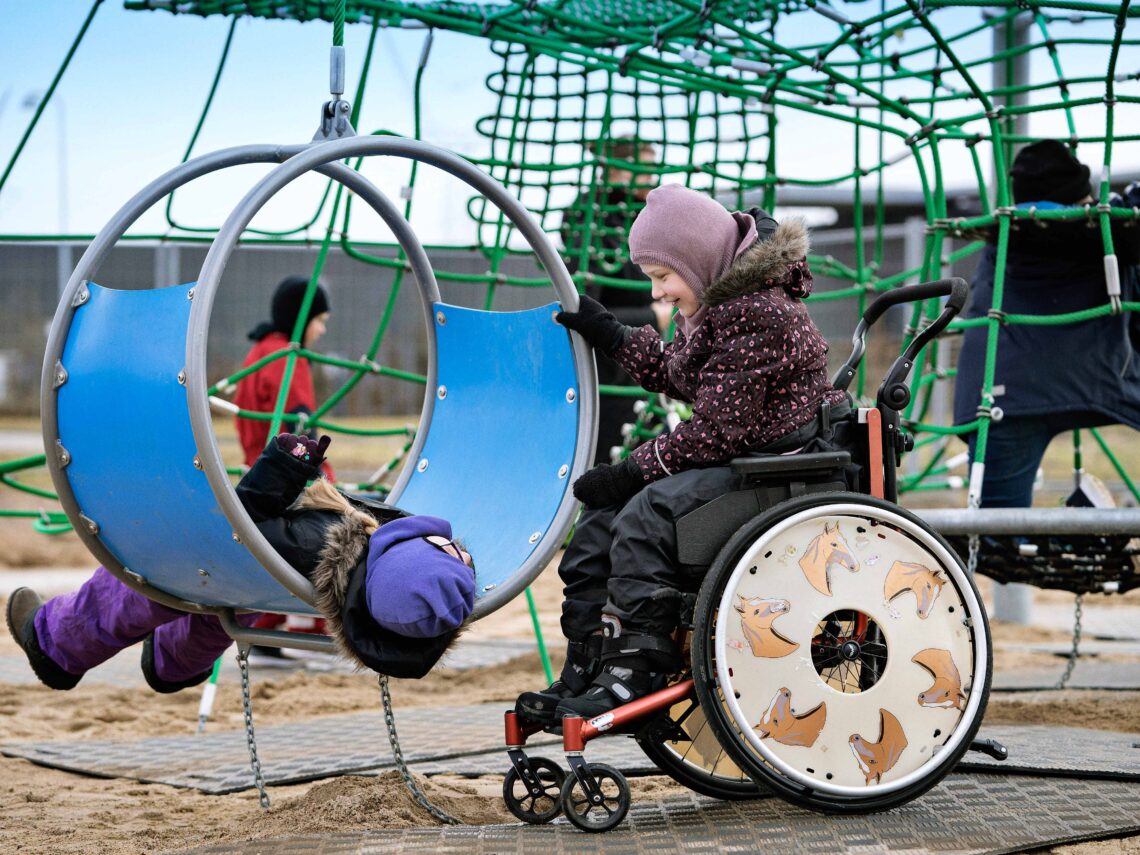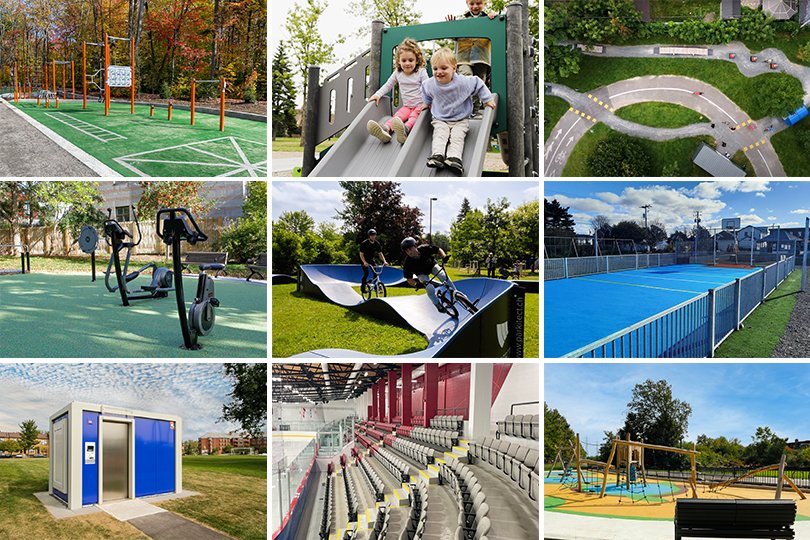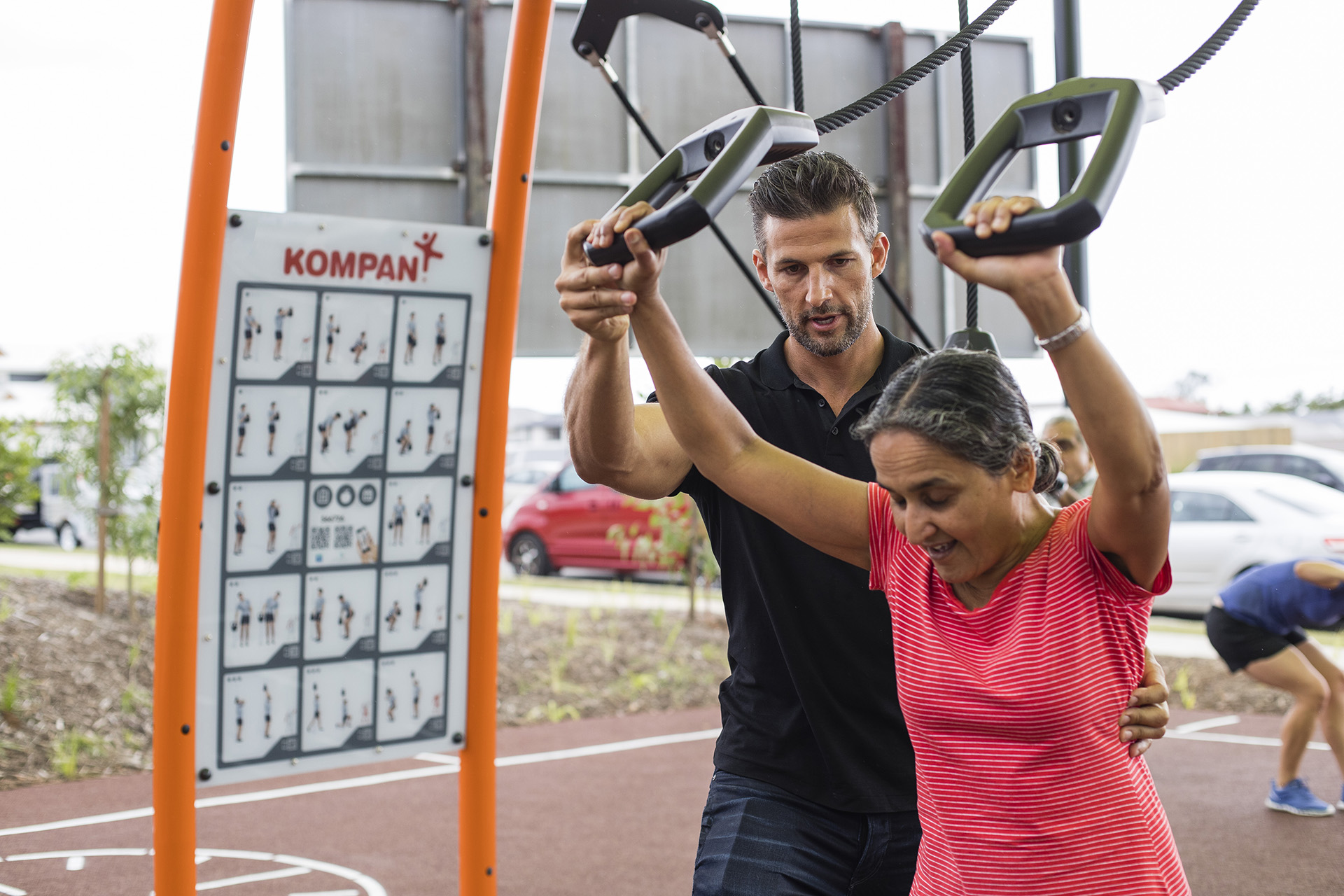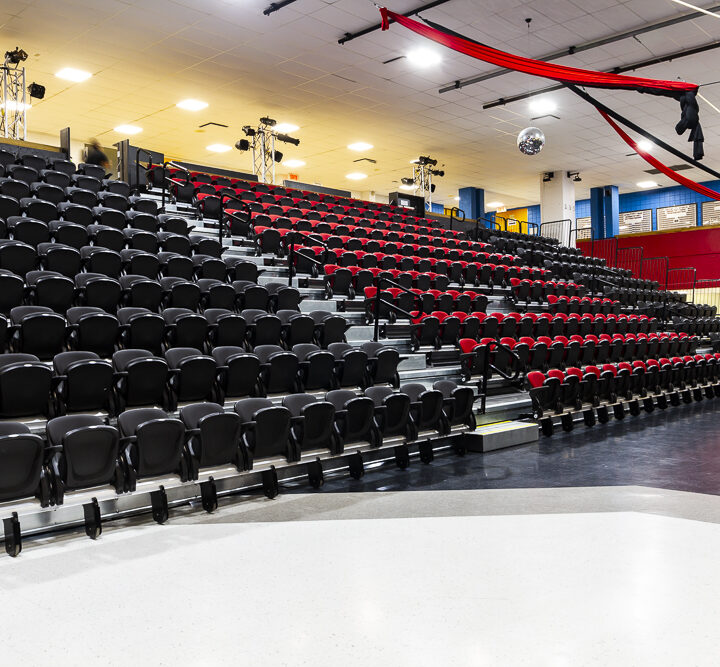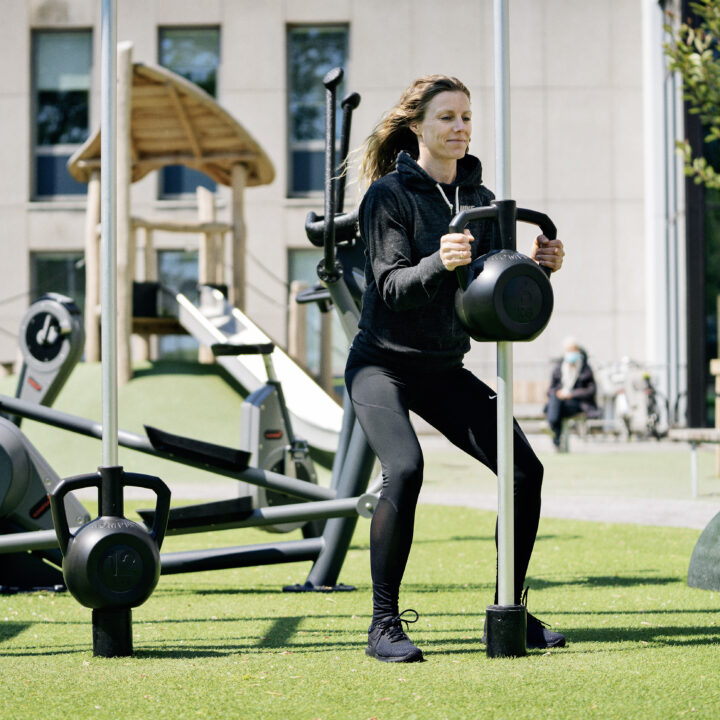Play is a universal language that transcends barriers. The KOMPAN Play Institute focuses on creating inclusive playgrounds, where every child, disabled or not, can play, grow and make friends. Discover how universal design transforms our play spaces into grounds for inclusion and discovery.
Equality in the game
“Equipment must be exciting. And these kids want to be with their friends.“These words, taken from interviews conducted by the KOMPAN Gaming Institute with specialist players, reveal the very essence of gaming. Whether for disabled or non-disabled children, the aim is to create playgrounds where everyone can flourish.
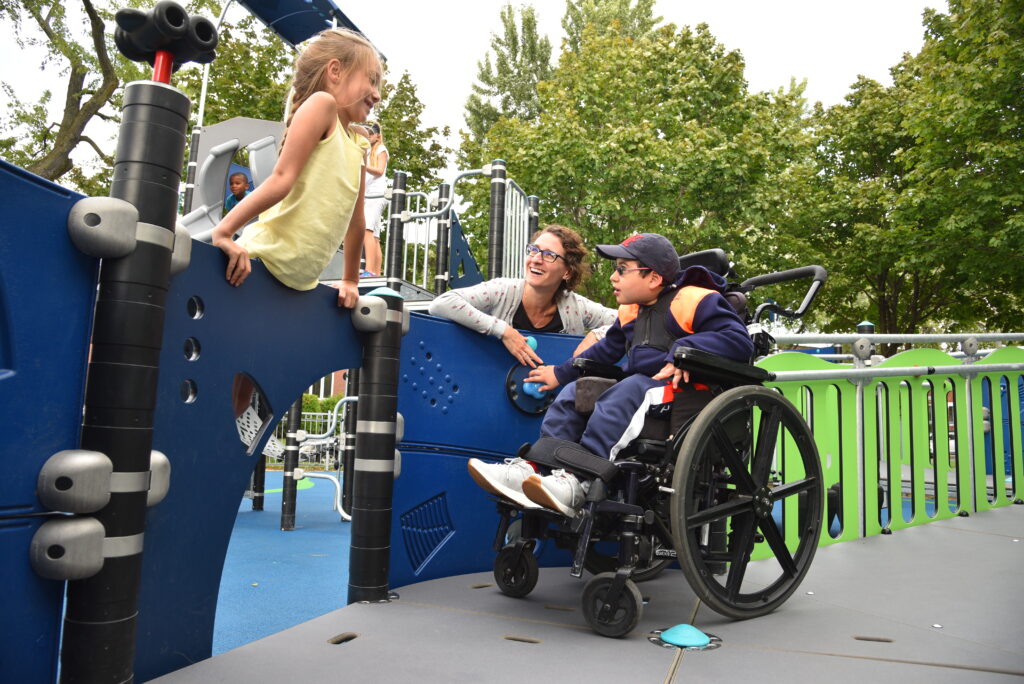
Wilson Park, City of Montreal
Equitable access to public playgrounds is essential for our communities. However, ensuring inclusion goes beyond physical accessibility. Specialized designs can sometimes exclude rather than include, stigmatizing or annoying users. The KOMPAN Play Institute addresses the complex challenge of creating truly inclusive playgrounds, balancing accessibility, challenge and relevance.
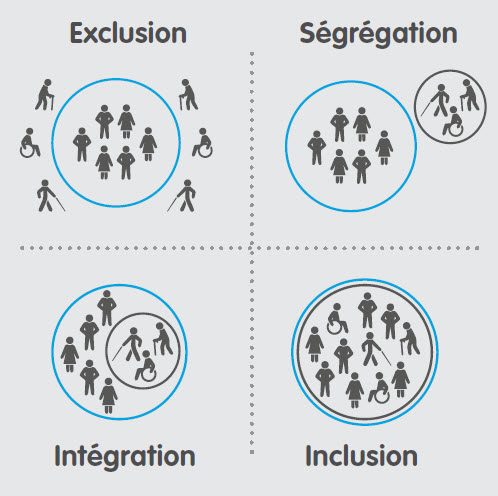
Why consider universal playgrounds?
Play promotes growth and learning, regardless of background or ability. Interaction between disabled and typical children stimulates development and empathy. Play reduces isolation and fear of others, creating an environment where everyone can flourish.
Universal, ergonomic playgrounds
Since the 1990s, KOMPAN has been working to design inclusive playgrounds, emphasizing physical and social play as a shared language. Disabled children want to play as much as other children, and their inclusion is crucial.
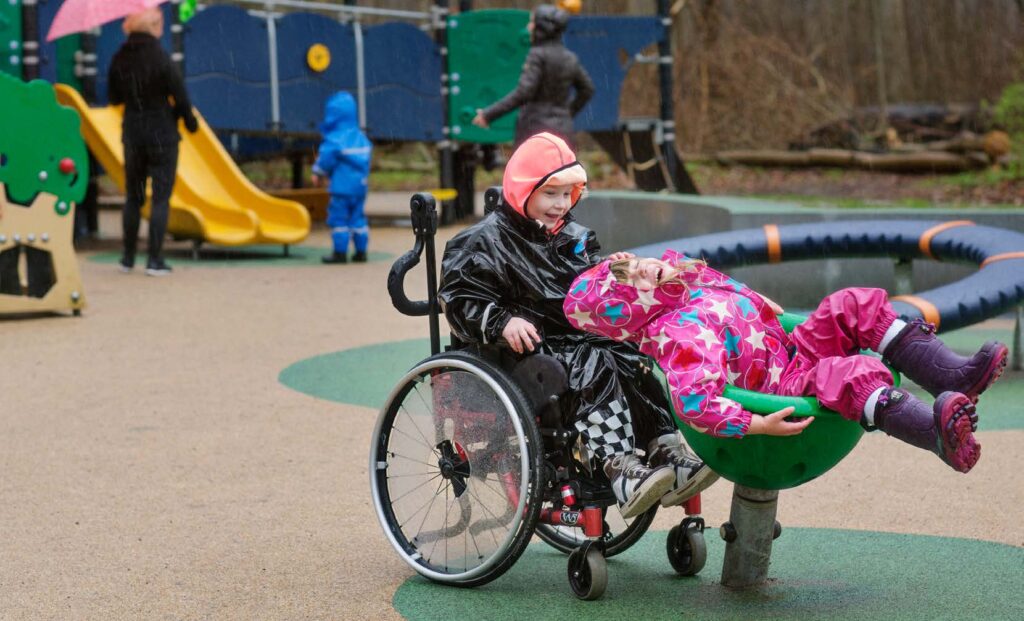
An inclusive playground must be both accessible and exciting. Access paths and facilities must be suitable for everyone, while offering a variety of experiences. The KOMPAN Play Institute has conducted extensive studies in schools and day-care centers for disabled children, confirming the importance of fun and social interaction.
6 key points of universal playground design
Accessible and inclusive routing and infrastructure
Clear pathways and signage ensure smooth access to activities. Alternative routes and transparent design promote inclusion.- Access to relevant activitiesat ground level
Suitable surfacing surrounds activities such as spinning tops and swings, with varied access options. For example, a Matchwinner Velour sand dressed surface makes it easier to move around in a wheelchair or for people with functional limitations. - Access to relevant activities at height
Activities at height must be accessible, offering sensations and social benefits. - Exciting, stimulating play
Activities should provide exciting sensations, with different levels of difficulty and stimulation.
- Promote social interaction
Group activities, parallel options and transparent designs encourage interaction between children. - Variation in play activities
Dynamic and calm, creative and physical activities, with space for breaks, create an inclusive environment.
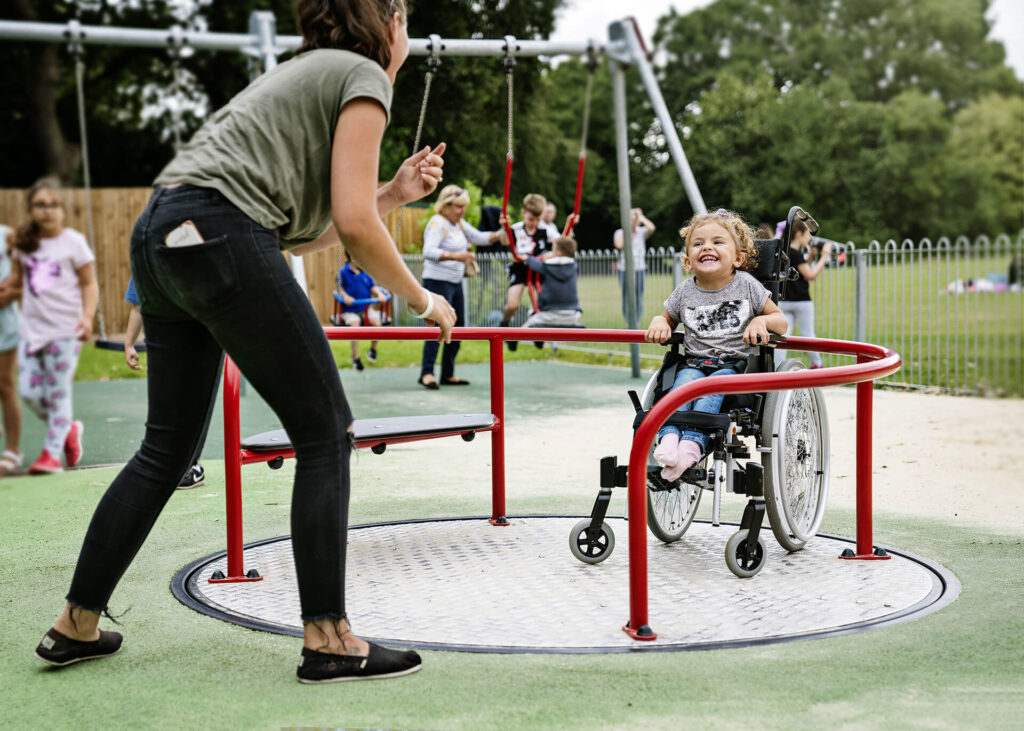
The inclusive carousel is the perfect example of an inclusive, accessible and exciting play structure.
By embracing universal design, playgrounds become inclusive spaces where every child can flourish, grow and have fun. The KOMPAN Play Institute works tirelessly to transform playgrounds into places of discovery and friendship, where all children can play, laugh and grow together.
Discover these inclusive playgrounds all over Quebec!
Free translation of the white paper “PLAY FOR ALL” by KOMPAN Play Institute


